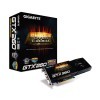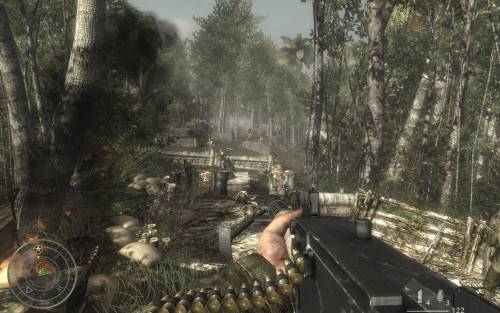- Qualcomm Launches Snapdragon 4 Gen 2 Mobile Platform
- AMD Launches Ryzen PRO 7000 Series Mobile & Desktop Platform
- Intel Launches Sleek Single-Slot Arc Pro A60 Workstation Graphics Card
- NVIDIA Announces Latest Ada Lovelace Additions: GeForce RTX 4060 Ti & RTX 4060
- Maxon Redshift With AMD Radeon GPU Rendering Support Now Available
Gigabyte GeForce GTX 260 Super Overclock

NVIDIA’s GeForce GTX 260 is not a new card. In fact, it’s been available for over a year in its 216 Core form. So is it even worth a look at today? Where Gigabyte’s “Super Overclock” version is concerned, yes. Although it costs less than a stock GTX 275, this new card beat it out in almost every single game and setting we put it through.
Page 3 – Call of Duty: World at War
The Call of Duty series is one that needs no introduction. Although only six years old, CoD has already become a stature where both single-player and multi-player first-person shooters are concerned. From the series’ inception, each game has delivered stellar gameplay that totally engrosses you, thanks in part to creative levels, smart AI and realistic graphics.
World at War is officially the 5th game in the series, and while some hardcore fans claim that Treyarch is simply unable to deliver as high caliber a game as Infinity Ward, the title does do well to hold everyone over until Modern Warfare 2 hits (November 10, 2009). One perk is that World at War focuses on battles not exhausted in other war games, which helps to keep things fresh.
Manual Run-through: The level chosen for our testing is “Relentless”, one that depicts the Battle of Peleliu, which has American soldiers advance to capture an airstrip from the Japanese. The level is both exciting to play and incredibly hard on your graphics hardware, making it a perfect choice for our testing.



Given the pre-overclocked specs of Gigabyte’s card, it seemed obvious that it could keep up to the GTX 275, but so far, it’s actually managed to surpass its performance as well. Compared to a stock-clocked GTX 260, the Super Overclock proved 20% faster at 2560×1600. So what about it’s best-playable?
|
Graphics Card
|
Best Playable
|
Min FPS
|
Avg. FPS
|
|
NVIDIA GTX 295 1792MB (Reference)
|
2560×1600 – Max Detail, 4xAA
|
22
|
61.988
|
|
NVIDIA GTX 285 1GB (EVGA)
|
2560×1600 – Max Detail, 4xAA
|
24
|
41.563
|
|
NVIDIA GTX 260 896MB (GBT SOC)
|
2560×1600 – Max Detail, 4xAA
|
22
|
39.849
|
|
NVIDIA GTX 275 896MB (Reference)
|
2560×1600 – Max Detail, 4xAA
|
22
|
39.187
|
|
ATI HD 4890 1GB (Sapphire)
|
2560×1600 – Max Detail, 0xAA
|
21
|
42.778
|
|
ATI HD 4870 1GB (Reference)
|
2560×1600 – Normal Detail, 0xAA
|
23
|
42.097
|
|
NVIDIA GTX 260 896MB (XFX)
|
2560×1600 – Normal Detail, 0xAA
|
20
|
38.685
|
|
NVIDIA GTX 250 1GB (EVGA)
|
2560×1600 – Normal Detail, 0xAA
|
19
|
37.054
|
|
ATI HD 4770 512MB (Gigabyte)
|
1920×1080 – Max Detail, 4xAA
|
19
|
36.639
|
Well, not surprisingly, 40FPS is completely playable, so 4xAA at 2560×1600 is our choice. On the stock-clocked card, the highest detail settings are a bit too much, so Gigabyte managed to take us up to a new tier… something rarely seen by pre-overclocked cards.
Support our efforts! With ad revenue at an all-time low for written websites, we're relying more than ever on reader support to help us continue putting so much effort into this type of content. You can support us by becoming a Patron, or by using our Amazon shopping affiliate links listed through our articles. Thanks for your support!






